This article was medically reviewed by Luba Lee, FNP-BC, MS. Luba Lee, FNP-BC is a Board-Certified Family Nurse Practitioner (FNP) and educator in Tennessee with over a decade of clinical experience. Luba has certifications in Pediatric Advanced Life Support (PALS), Emergency Medicine, Advanced Cardiac Life Support (ACLS), Team Building, and Critical Care Nursing. She received her Master of Science in Nursing (MSN) from the University of Tennessee in 2006.
There are 7 references cited in this article, which can be found at the bottom of the page.
This article has been viewed 64,377 times.
Chronic elevation of potassium levels (also known as hyperkalemia) is usually a sign of reduced kidney function. However, it can also be caused by certain medications, acute injuries, or a severe diabetic crisis (called "diabetic ketoacidosis") among other things. Elevated potassium can be a serious and potentially life-threatening condition (when it is very high); therefore, it is a condition that always warrants the attention of a medical professional.
Steps
Treating High Potassium Levels
-
1Understand that problems with high potassium are generally the result of kidney disease or medication use.[1] There are other causes, but these two are the most common by far. Treatment of high potassium will aim to induce potassium loss via excretion through your urine.[2]
- Start by getting a blood test from your doctor to confirm whether or not you have high potassium. It is a diagnosis that is hard to tell by symptoms alone, so a blood test is very important prior to start treatment of any sort.[3]
- Other less common but equally important causes of high potassium are certain "high glucose states" (called "diabetic ketoacidosis") that can occur in the body in severe diabetics, as well as severe injuries to your body, often from an accident of some sort.[4]
-
2Get an electrocardiogram.[5] Because high potassium can be so dangerous to the heart (and because heart symptoms are one of the major ways to diagnose it), your doctor will want to get you an electrocardiogram (a test that evaluates your heart's rate and rhythm pattern) as quickly as possible if your levels are significantly elevated.
- If your potassium is only mildly elevated, however, your doctors may try a more conservative approach and ask you to come back for a repeat test.
- The pattern on the electrocardiogram will give your doctor a lot of valuable information on the current state of your heart.[6] This is important not only to help with the diagnosis of high potassium but also to determine the urgency of treatment, as the state of your heart (and the potential of your heart being in danger from too much potassium) will dictate the strategy your doctors use to lower your potassium.
Advertisement -
3Review your list of current medications with your doctor. You may be taking a prescription drug that is causing hyperkalemia, or high potassium levels. Your doctor may suggest switching to a new medication or lowering your dose. Also, he or she will suggest stopping taking any potassium supplements or multi-vitamins that contain potassium.[7]
- If you have very high potassium, your doctor will stop altogether any medications that contribute to elevated potassium that he or she can in the short term, to help speed your recovery.[8]
- However, discontinuing medication is not enough on its own to treat severe cases of high potassium, which will need more aggressive methods of treatment.
-
4Have an IV inserted.[9] Assuming your potassium is high enough to warrant more aggressive medical treatment, your doctor will ask the nurse to insert an IV line as this can help to deliver the appropriate treatments more effectively and efficiently.
- Your doctor will likely suggest intravenous calcium, usually 500-3000 milligrams (10-20 mL) one at a time, 0.2 to 2 mL per minute.
- Your doctor may suggest that you take resin, which will help your body eliminate potassium through the bowels. The typical dose is 50 grams, which can be taken orally or administered in 30 mL of Sorbitol.
- If your doctor believes it is necessary, you may need to take insulin and/or glucose to move potassium into your cells, where it should be. The usual dose of insulin is 10 units by IV; the usual dose of glucose is 50% (D50W) and 50 mL (25 grams). These are typically administered as 1 ampule by IV over 5 minutes, onset in 15 – 30 minutes for 2 to 6 hours.
-
5Ask about diuretics. Diuretics or water pills are sometimes given to remove excess potassium through urination. Diuretics can be taken orally in a 0.5-2 mg dose, 1-2 times/day, or through an intravenous insertion, in a 0.5-1 mg dose. Your doctor may repeat in 2-3 hours for up to 2 doses if needed.
- Note that this treatment is not enough for urgent cases, but may be very helpful for more mild cases of elevated potassium.
-
6Have hemodialysis. If you are having kidney failure or if you have a significantly elevated potassium level, hemodialysis – a process by which a machine removes waste, including excess potassium, from your blood, since your kidneys are unable to do so – is your best treatment option.[10]
-
7Continue to be monitored by doctors post-treatment. After you have received treatment for your high potassium, it is extremely important to have continual monitoring of your potassium levels to ensure that they stay in a safe and normal range. Normally, patients stay in hospital for a short time after being treated for high potassium, where they can be hooked up to "cardiac monitors" (which monitor your heart function) and otherwise monitored until the doctors determine it is safe to go home.[11]
- High potassium is a potentially life-threatening condition, especially for the effect it can have on your heart.[12] Therefore, appropriate monitoring with your doctor post-treatment is key. There are times when this extra monitoring can make the difference between life and death, as your doctors can be there to catch any potential "relapse" of elevated potassium.
-
8Modify your diet. A diet with less than 2g per day of potassium is recommended to prevent relapses of elevated potassium. However, it is important to note that eating high potassium foods is rarely the cause of high potassium levels. As previously mentioned, it is usually caused by kidney disease or medications.[13]
Recognizing the Symptoms of High Potassium Levels
-
1Watch for cardiac symptoms. Too much potassium can affect the way your heart works, causing symptoms like arrhythmia (an abnormal rhythm), palpitations or skipped heartbeats, and, ultimately, cardiac arrest. If you have any reason to think you might be having cardiac symptoms get to a doctor immediately.[14]
-
2Pay attention to nausea and vomiting. High potassium levels can lead to an upset stomach, nausea, and vomiting.[15] These symptoms can lead to dehydration.
-
3Look for fatigue and weakness. Potassium helps muscles function, so if you have too much or too little, your muscles can weaken, making you feel weak, tired, and lethargic. This feeling may be exacerbated by other symptoms, especially vomiting.[16]
-
4Be aware of any numbness or tingling sensations. Feelings of numbness or tingling are also related to muscle activity. You may notice these sensations first in your extremities (the hands and feet) and then around your mouth; this may be followed by muscle twitching. Get medical help if you have these symptoms.[17]
-
5Understand that you may have no symptoms at all. Many people have no symptoms and only discover the high potassium levels when their doctors run blood tests.[18]
References
- ↑ http://www.uptodate.com/contents/treatment-and-prevention-of-hyperkalemia-in-adults
- ↑ http://www.uptodate.com/contents/treatment-and-prevention-of-hyperkalemia-in-adults
- ↑ http://www.mayoclinic.org/symptoms/hyperkalemia/basics/causes/sym-20050776
- ↑ http://www.uptodate.com/contents/treatment-and-prevention-of-hyperkalemia-in-adults
- ↑ http://emedicine.medscape.com/article/240903-treatment
- ↑ http://emedicine.medscape.com/article/240903-treatment
- ↑ http://emedicine.medscape.com/article/240903-treatment
- ↑ http://emedicine.medscape.com/article/240903-treatment
- ↑ http://emedicine.medscape.com/article/240903-treatment#d7
- ↑ http://emedicine.medscape.com/article/240903-treatment
- ↑ http://emedicine.medscape.com/article/240903-treatment
- ↑ http://emedicine.medscape.com/article/240903-treatment
- ↑ http://emedicine.medscape.com/article/240903-treatment#d11
- ↑ https://www.mayoclinic.org/symptoms/hyperkalemia/basics/when-to-see-doctor/sym-20050776
- ↑ https://www.mayoclinic.org/symptoms/hyperkalemia/basics/when-to-see-doctor/sym-20050776
- ↑ https://www.mayoclinic.org/symptoms/hyperkalemia/basics/when-to-see-doctor/sym-20050776
- ↑ https://emedicine.medscape.com/article/240903-clinical
- ↑ https://emedicine.medscape.com/article/240903-clinical
About This Article
To lower potassium levels, it's important that you talk with your doctor so they can confirm you have high potassium levels and determine the cause. Then, follow your doctor's recommended treatment plan, which may include taking diuretics to remove excess potassium in your body and stopping any prescription medications that increase potassium levels. If your levels are severely high, be prepared to have an IV inserted to help lower them. For more advice from our Medical co-author, like how to recognize the symptoms of high potassium levels, scroll down.

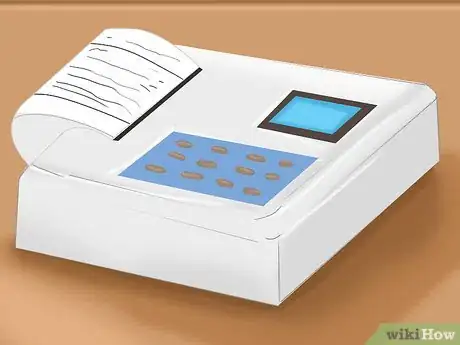
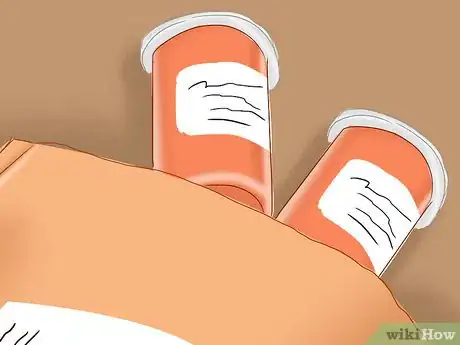
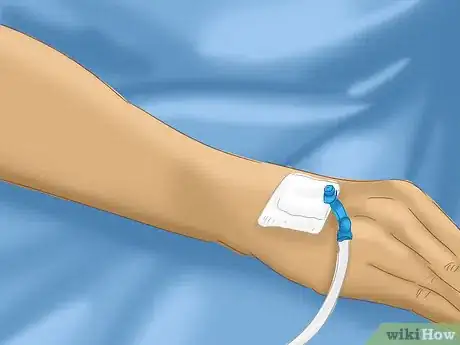

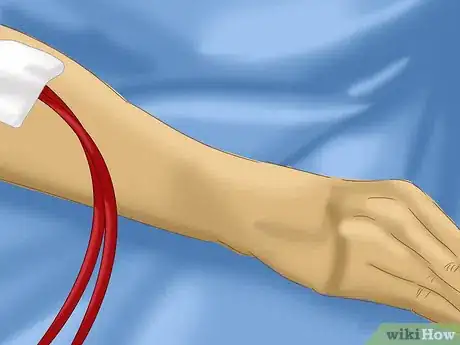





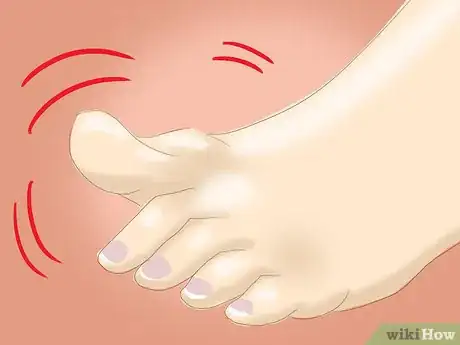


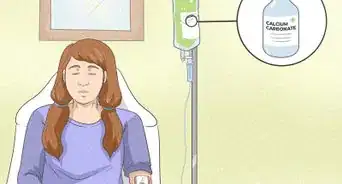

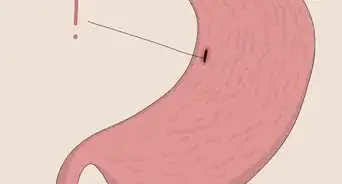




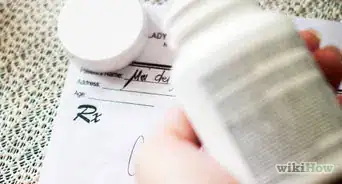











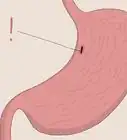



































Medical Disclaimer
The content of this article is not intended to be a substitute for professional medical advice, examination, diagnosis, or treatment. You should always contact your doctor or other qualified healthcare professional before starting, changing, or stopping any kind of health treatment.
Read More...